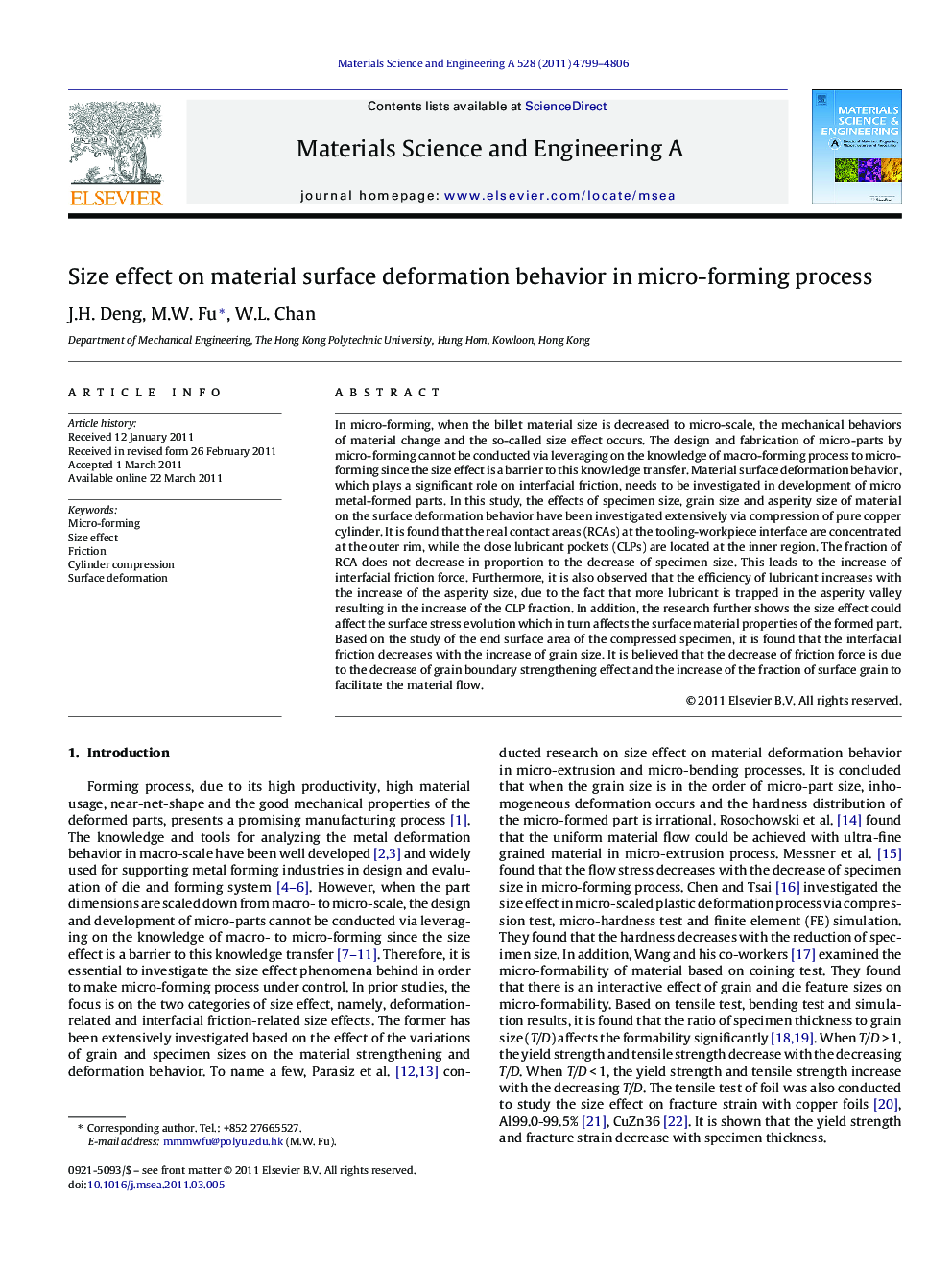| کد مقاله | کد نشریه | سال انتشار | مقاله انگلیسی | نسخه تمام متن |
|---|---|---|---|---|
| 1578755 | 1514820 | 2011 | 8 صفحه PDF | دانلود رایگان |

In micro-forming, when the billet material size is decreased to micro-scale, the mechanical behaviors of material change and the so-called size effect occurs. The design and fabrication of micro-parts by micro-forming cannot be conducted via leveraging on the knowledge of macro-forming process to micro-forming since the size effect is a barrier to this knowledge transfer. Material surface deformation behavior, which plays a significant role on interfacial friction, needs to be investigated in development of micro metal-formed parts. In this study, the effects of specimen size, grain size and asperity size of material on the surface deformation behavior have been investigated extensively via compression of pure copper cylinder. It is found that the real contact areas (RCAs) at the tooling-workpiece interface are concentrated at the outer rim, while the close lubricant pockets (CLPs) are located at the inner region. The fraction of RCA does not decrease in proportion to the decrease of specimen size. This leads to the increase of interfacial friction force. Furthermore, it is also observed that the efficiency of lubricant increases with the increase of the asperity size, due to the fact that more lubricant is trapped in the asperity valley resulting in the increase of the CLP fraction. In addition, the research further shows the size effect could affect the surface stress evolution which in turn affects the surface material properties of the formed part. Based on the study of the end surface area of the compressed specimen, it is found that the interfacial friction decreases with the increase of grain size. It is believed that the decrease of friction force is due to the decrease of grain boundary strengthening effect and the increase of the fraction of surface grain to facilitate the material flow.
► Interfacial friction increases with the decrease of specimen size.
► Efficiency of lubricant is much higher in the case with larger asperity.
► Area fraction of real contact area is sensitive to the change of asperity size.
► The close lubricant pockets coalesce in the case of using annealed material.
► The interfacial friction force decreases with the increase of grain size.
Journal: Materials Science and Engineering: A - Volume 528, Issues 13–14, 25 May 2011, Pages 4799–4806